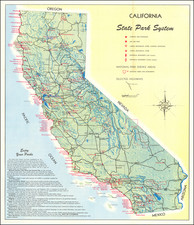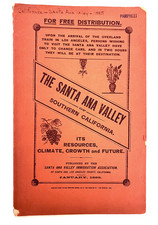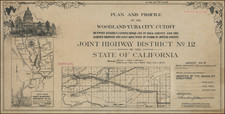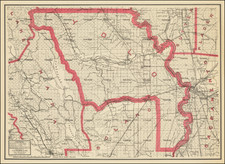Central image of this important early mining town in Sierra Nevada Mountain foothills, published in San Francisco by Kuchell & Dresel.
The view is almost certainly the earliest large format printed view of Sonora. The view shows a booming early mining town, with a number of well constructed buildings, including several 2 and 3 story buildings. Lacking the title and the marginal views but showing churches, local businesses, residences, hotels (United States, Placer, and City), brewery, and Rulofson & Cameron daguerreotypes "Dag. Saloon" wagon.
Sonora, California is the county seat of Tuolomne County, in the heart of California's Gold Region. Shortly after the discovery of gold in California, in the summer of 1848, gold was discovered on what would become Woods Creek, named for its discoverer, Benjamin Wood, and the town of Jamestown was soon established nearby. Within a few weeks, hundreds of miners were wading in the creek, seeking gold.
In early 1849 significant numbers of Mexicans from the province of Sonora began to arrive and prospect near Jamestown. There was also an anti-foreigner sentiment-particularly against Mexicans, with which Americans had just fought a war. Conflicts began between Americans and Mexican miners. In an effort to push the Mexicans out of the more lucrative regions, the Mexican miners were told that they should move up Woods Creek and mine where the Americans thought there was little gold. The Mexicans did so and found not only gold flakes but, often, large nuggets.
The mining camp known as Sonorian Camp (and names like Sonoranian Camp), was thus established on the former Indian trail south of Woods Creek. The camp attracted not only Mexicans but miners from Chile, Peru, Argentina, China, Australia, and France. In November, 1849 a town government was created, primarily to fund the establishment of a hospital, badly needed because many of the miners, with a poor diet and exhaustion, had come down with scurvy. The new Town Council of Sonora was composed of Americans, many of whom were merchants who served the Mexican miners and were sympathetic to them.
In June, 1850, California enacted the Foreign Miner's Tax. This required all foreign miners to pay a tax of $20 per month-a tax that the vast majority could not afford. This tax resulted in the population of Sonora, then at its peak at 5,000, dropping by four-fifths and a consequent major recession. Many miners returned to Mexico, while others moved to more remote areas where the tax collector was unlikely to find them.











![[ California & Southwest ] Granata Nova Et California](https://storage.googleapis.com/raremaps/img/small/72305.jpg)
![[Northern San Diego County] Escondido Quadrangle](https://storage.googleapis.com/raremaps/img/small/83567.jpg)

